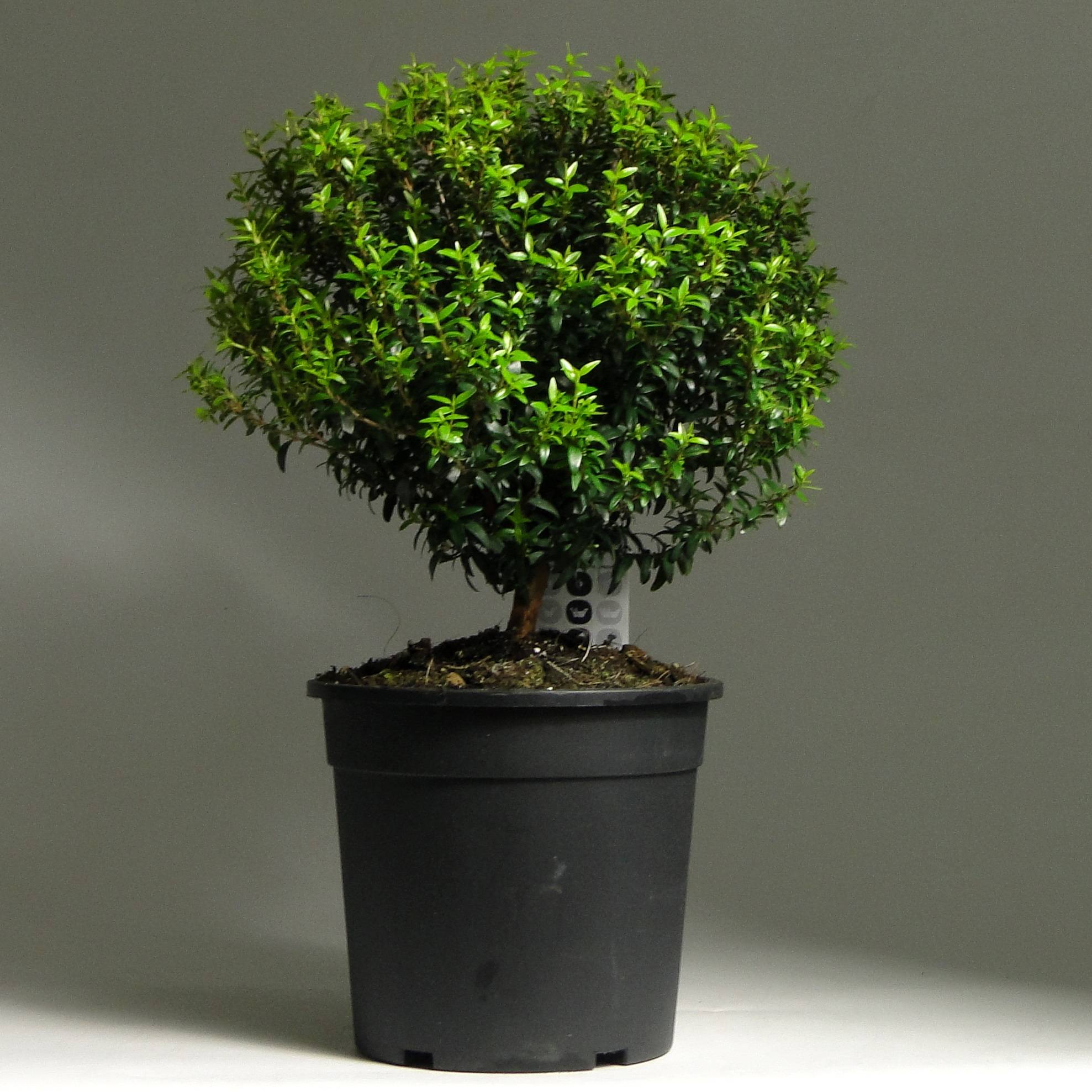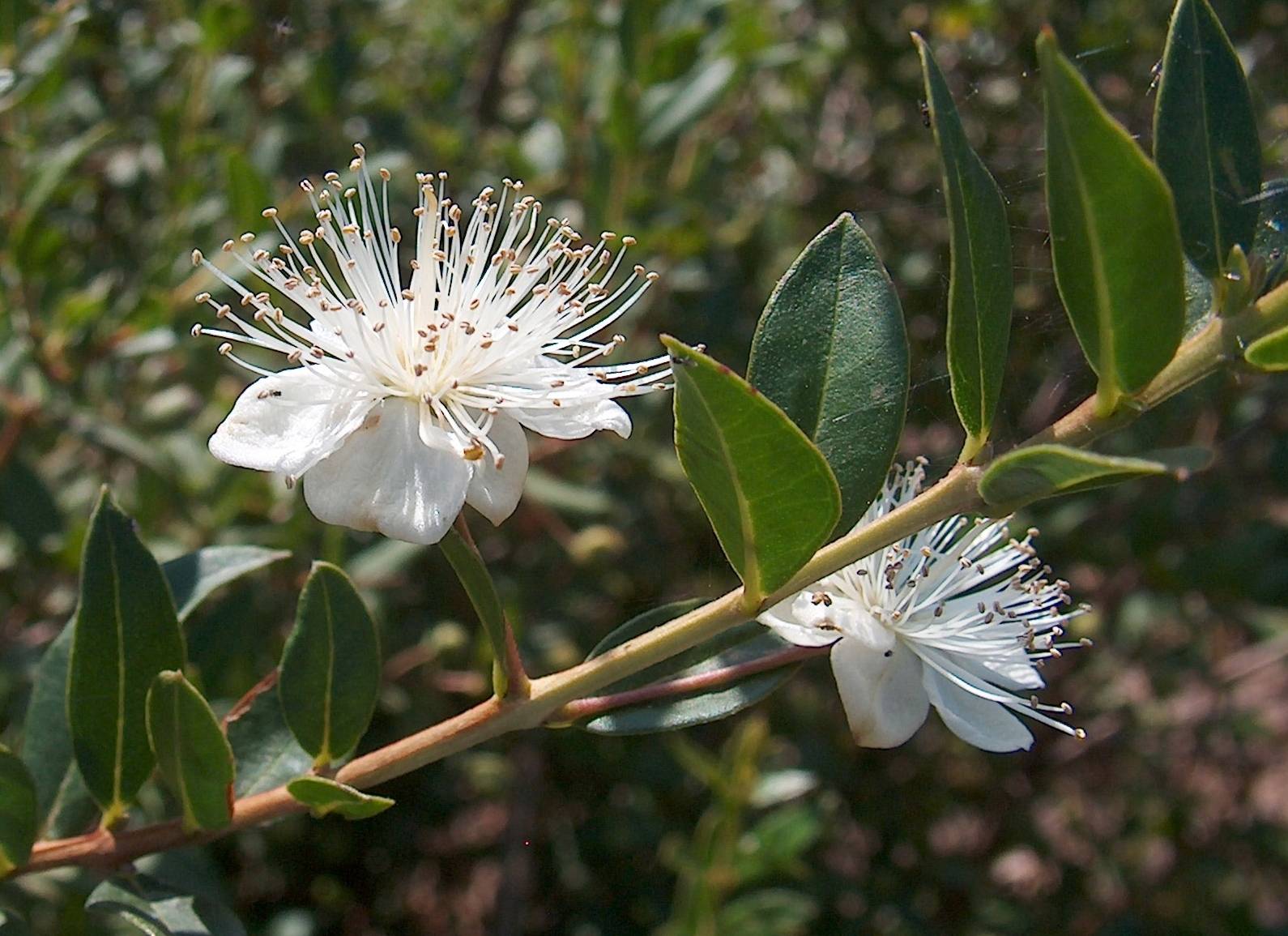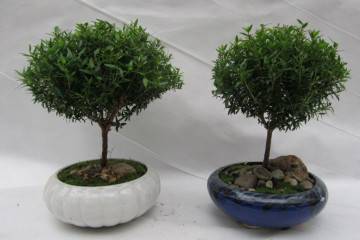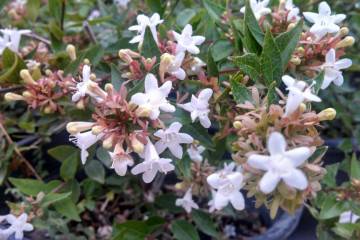How to propagate myrtle at home by cuttings
Content:
Evergreen myrtle belongs to the genus of woody plants with white flowers that contain essential oils. Novice gardeners believe that caring for this plant requires special skills. The myrtle tree really needs attention, but that does not mean that it is very difficult to maintain. The article provides information on how to propagate myrtle, as well as the difficulties that can occur during this process.
How to propagate myrtle at home
There are two breeding options - cuttings and seeds. Each of them requires care and attention.
Myrtle: reproduction at home by cuttings
Cuttings can be done twice a year - in February and July. It is better to cut the material for this from the side shoots. The height of the branches should be about 10 cm. The shoots should be lignified.
The lower leaves are removed, the upper ones are cut in half. The substrate for propagation of myrtle by cuttings should consist of equal proportions of peat and sand. The bottom is placed in a growth-promoting solution for 2 hours. A mixture of heteroauxin with 0.25% ascorbic acid is best suited. After that, the cuttings are washed with clean water and planted in the ground to a depth of 3-4 cm.
How to root myrtle
For successful rooting of myrtle cuttings, the soil should always be moderately moist. The plant itself and the surrounding soil should be regularly sprayed with a solution of root, heteroauxin or epin.
The greenhouse needs to be ventilated a couple of times a week. The glass or bottle must be wiped off condensation, otherwise the plant may get sick.
The seedlings are transplanted into pots with a diameter of 7-10 cm. After the roots are completely entwined with a clod of earth, the myrtle is mixed into a larger pot. For successful cultivation you need:
- provide a constant stream of light, avoiding direct sunlight;
- water the plant regularly;
- maintain the optimal temperature in the room.
The first flowering of myrtle can be expected no earlier than in 2.5-3 years.
Seed propagation
In nature, myrtle reproduces by seeds. This method has a significant drawback - there is no guarantee that the plant will grow and take root.
Step-by-step instructions on how to propagate myrtle at home:
- Buy or collect fresh myrtle seeds. Germination of old seeds is much lower.
- Place the planting material in a weak solution of potassium permanganate for 3-5 minutes. This is an optional process, but it will cleanse the seeds of excess bacteria and increase the chance of germination.
- Rinse seeds with water.
- Prepare the planting mixture. To do this, you need to mix humus, earth and sand in equal proportions or purchase ready-made sowing soil.
- Prepare a container for growing. This can be a container at least 10 cm deep or any glass if there is nothing else.
- Fill the container with the prepared mixture.
- Place the seeds 5 cm deep.
- Create a greenhouse effect. You can use cling film, plastic bag, or glass.
After the first shoots appear, it is necessary to transplant the plant to a more spacious place. Myrtle is transplanted into a roomy pot, where its further development will take place.
Reproduction difficulties
This plant requires anxious care. Cutting myrtle, like propagation by seeds, has its own difficulties.
Dormant period
The plant takes time to gain strength for flowering. Its dormant period usually falls in the winter. Therefore, at this time, it is recommended to place the myrtle in a room where the temperature is stably kept at around 5 ° C. Watering should be significantly reduced. In such conditions, the dormant period lasts about two months.
Watering
The tree should be watered abundantly as soon as the topsoil dries out. In the spring and summer, spray its leaves to increase the humidity.
It is also impossible to overmoisten the soil, this leads to decay of the roots and the development of diseases. It is best to water the plant with settled water every other day.
Pests
The plant can be infested with pests. Signs of some parasite infection and how to deal with them:
- spider mite - a white web forms on the underside of the leaves. The plant needs to be treated with acaricide;
- aphids - the leaves dry out, fall off, light green or brown insects appear. The pests are washed off in the shower, the affected parts of the plant are cut off, and then treated with an insecticide;
- mealybug - a white fluff forms on the branches and leaves. The worms are washed off in the shower or harvested by hand. The myrtle trunk is treated with diluted alcohol;
- scale - leaves or twigs become sticky. Pests are washed off, the leaves are treated with soapy water;
- whitefly - myrtle does not grow, its leaves fold and fall off. Insects are washed off with water, and the plant is hardened in a cold room at a temperature of 10-15 ° C;
- thrips - the appearance of dark spots on the underside of the leaf and white spots on the upper part.
To avoid decay of the plant roots, it must be treated with highly effective insect pest control agents.
Growing myrtle at home is not an easy task for beginners. But it is quite possible to cope with it by following the elementary rules of caring for plants. Reproduction of myrtle is not an easy task. The first sign of successful propagation of a plant by cuttings is the appearance of fresh leaves. They are planted in separate flower pots and watered abundantly. When propagated by seeds, the first shoots appear within a week, after which the plant is transplanted into separate pots. In any case, myrtle is a symbol of a friendly and strong family, which will delight household members with its crown for a long time.



















